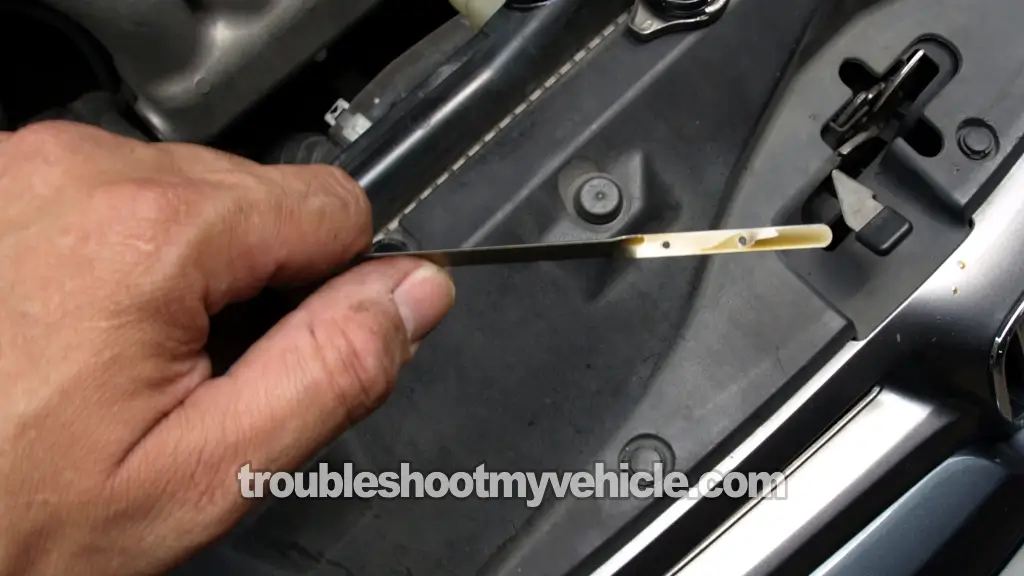
There are 4 tests that are done to test for a blown head gasket. 2 of those 4 tests require no tools at all to perform.
In this tutorial, I'll explain how to do all 4 so that you can find out if your 3.9L equipped full-size Dodge Ram pickup has a blown head gasket (or not).
Contents of this tutorial:
ES ![]() You can find this tutorial in Spanish here: Cómo Probar Los Empaques De Cabeza (3.9L V6 Dodge Ram Pickup y Van) (at: autotecnico-online.com).
You can find this tutorial in Spanish here: Cómo Probar Los Empaques De Cabeza (3.9L V6 Dodge Ram Pickup y Van) (at: autotecnico-online.com).
APPLIES TO: This tutorial applies to the following Dodge Ram pickups:
- 3.9L V6 Dodge Ram 150 Pickup: 1989, 1990, 1991, 1992, 1993.
- 3.9L V6 Dodge Ram 250 Pickup: 1989, 1990, 1991, 1992, 1993.
- 3.9L V6 Dodge Ram 1500 Pickup: 1994, 1995, 1996, 1997, 1998, 1999, 2000, 2001.
- 3.9L V6 Dodge Ram 2500 Pickup: 1994, 1995, 1996, 1997, 1998, 1999, 2000, 2001.
NOTE: You can find all of the B-Series Ram van tutorials here:
Symptoms Of A Blown Head Gasket
The most common cause of a blown head gasket is that the engine overheated because:
- Fan clutch failed.
- The engine ran without coolant (due to a coolant leak).
- Thermostat went bad and got stuck in its closed position and the coolant could not circulate.
The most common symptoms a blown head gasket are:
- Your 3.9L V6 Dodge pickup is overheating. You know it's not the fan (or fan clutch) or thermostat.
- White smoke is coming out of the tail-pipe and it smells like anti-freeze being cooked.
- The engine does not start.
- Your tests have confirmed that the ignition system is not behind the no-start problem.
- Your tests have confirmed that the fuel pump is OK and not behind the no-start problem.
- The engine oil is thick and tan to off-white color (mixed with coolant).
TEST 1: Oil The Color Of Coffee With Too Much Creamer

Generally, the most common end result of a blown head gasket is the engine oil mixed with coolant.
So for our first test, we'll check the condition and color of the oil sticking to the engine oil dipstick.
If the engine oil is the color of 'coffee with too much creamer', then you can conclude that one or both of the head gaskets, on your 3.9L V6 Dodge Ram pickup, are blown.
This is what you need to do:
- 1
Open the hood on your 3.9L pickup.
- 2
Pull out the engine's oil dipstick.
- 3
Check what the color of the oil is and how thick it is.
- 4
You'll see one of two things:
1.) Either the oil on the dipstick is a creamy, off-white color and is thick as syrup.
2.) The oil is its normal color and viscosity.
Let's examine your test result:
CASE 1: The engine oil looks like coffee with too much creamer. This test result tells you that one or both of the head gaskets are blown.
CASE 2: The color of the engine oil is normal. This is the correct and expected test result.
The next step is to check to see if compression/exhaust gases are leaking into the cooling system. Go to: TEST 2: Exhaust Gases Shooting Out Of The Radiator.
TEST 2: Exhaust Gases Shooting Out Of The Radiator

In this test, we're gonna' crank the engine with the radiator's cap removed.
If the coolant, inside the radiator, is shot out while cranking the engine, then you can conclude that one or both of the head gaskets are blown.
CAUTION: Do not remove the radiator cap with a hot engine! If the engine, in your Dodge pickup, has been running for any length of time, let it cool down completely before removing the cap from the radiator.
Let's get started:
- 1
Remove the radiator cap from the radiator.
- 2
Top off the radiator with water if the coolant level is low.
- 3
Have your helper to crank the engine, while you stand at a safe distance from the open radiator.
- 4
You'll see one of two results:
1.) The water or coolant inside the radiator will shoot up and out of the now open radiator.
2.) The coolant will not be disturbed. In other words, cranking the engine will have no effect on the level of the water or coolant in the radiator.
OK, now that the testing part is done, let's take a look at what your results mean:
CASE 1: The coolant bubbled out or shot out from the radiator. This result confirms a blown head gasket issue and lets you know that the combustion gases are leaking into the cooling system. No further testing is required.
CASE 2: The coolant DID NOT bubble out NOR shoot out from the radiator. This is the correct test result.
If your 3.9L V6 Dodge pickup runs but runs with a misfire (or extreme rough idle), go to: TEST 3: Cylinder Compression Test.
If your 3.9L V6 Dodge pickup runs but starts to overheat immediately and for no apparent reason, go to: TEST 4: Using A Chemical Block Tester (Combustion Leak Tester).
